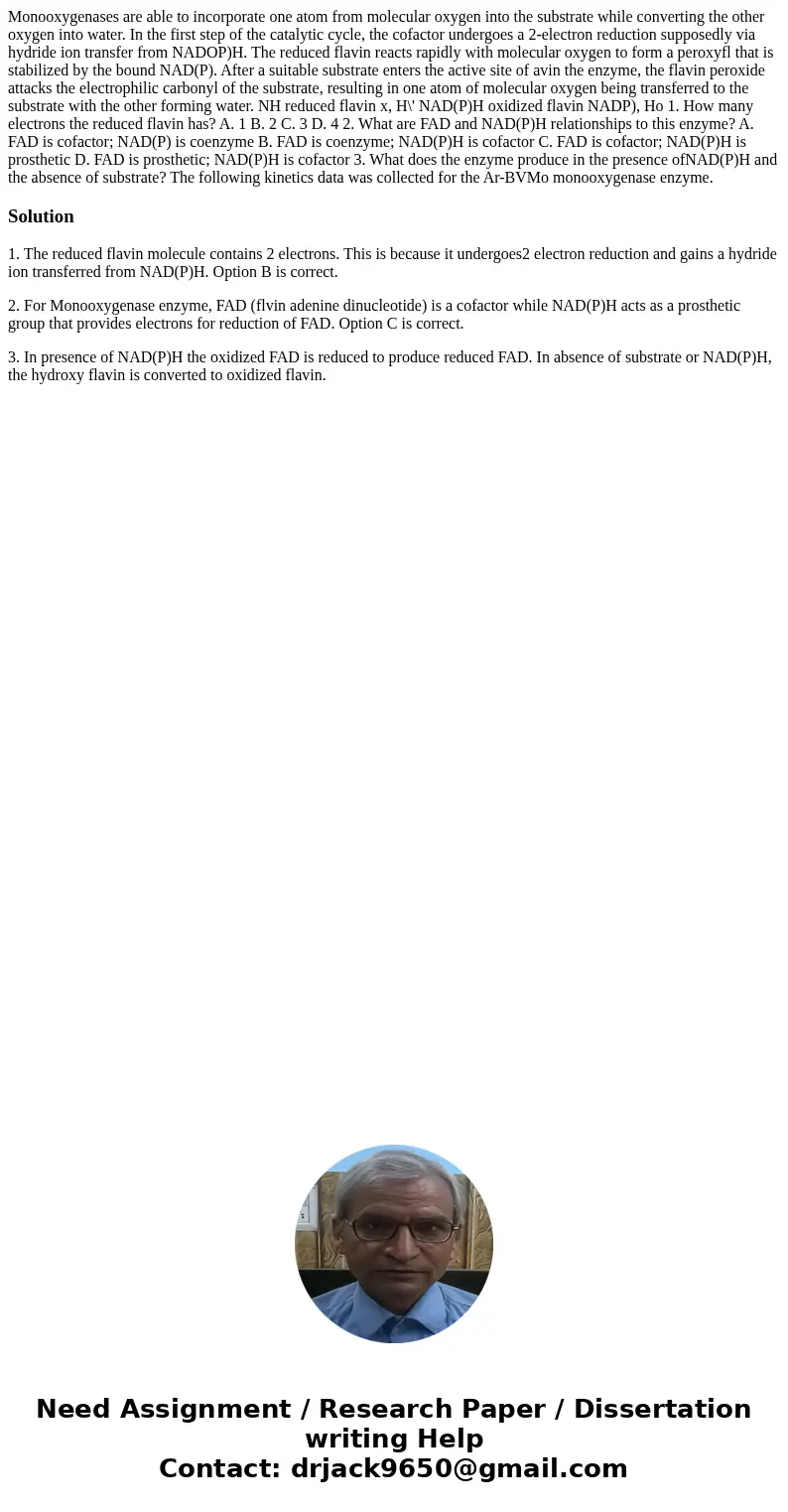Monooxygenases are able to incorporate one atom from molecul
Monooxygenases are able to incorporate one atom from molecular oxygen into the substrate while converting the other oxygen into water. In the first step of the catalytic cycle, the cofactor undergoes a 2-electron reduction supposedly via hydride ion transfer from NADOP)H. The reduced flavin reacts rapidly with molecular oxygen to form a peroxyfl that is stabilized by the bound NAD(P). After a suitable substrate enters the active site of avin the enzyme, the flavin peroxide attacks the electrophilic carbonyl of the substrate, resulting in one atom of molecular oxygen being transferred to the substrate with the other forming water. NH reduced flavin x, H\' NAD(P)H oxidized flavin NADP), Ho 1. How many electrons the reduced flavin has? A. 1 B. 2 C. 3 D. 4 2. What are FAD and NAD(P)H relationships to this enzyme? A. FAD is cofactor; NAD(P) is coenzyme B. FAD is coenzyme; NAD(P)H is cofactor C. FAD is cofactor; NAD(P)H is prosthetic D. FAD is prosthetic; NAD(P)H is cofactor 3. What does the enzyme produce in the presence ofNAD(P)H and the absence of substrate? The following kinetics data was collected for the Ar-BVMo monooxygenase enzyme. 
Solution
1. The reduced flavin molecule contains 2 electrons. This is because it undergoes2 electron reduction and gains a hydride ion transferred from NAD(P)H. Option B is correct.
2. For Monooxygenase enzyme, FAD (flvin adenine dinucleotide) is a cofactor while NAD(P)H acts as a prosthetic group that provides electrons for reduction of FAD. Option C is correct.
3. In presence of NAD(P)H the oxidized FAD is reduced to produce reduced FAD. In absence of substrate or NAD(P)H, the hydroxy flavin is converted to oxidized flavin.

 Homework Sourse
Homework Sourse